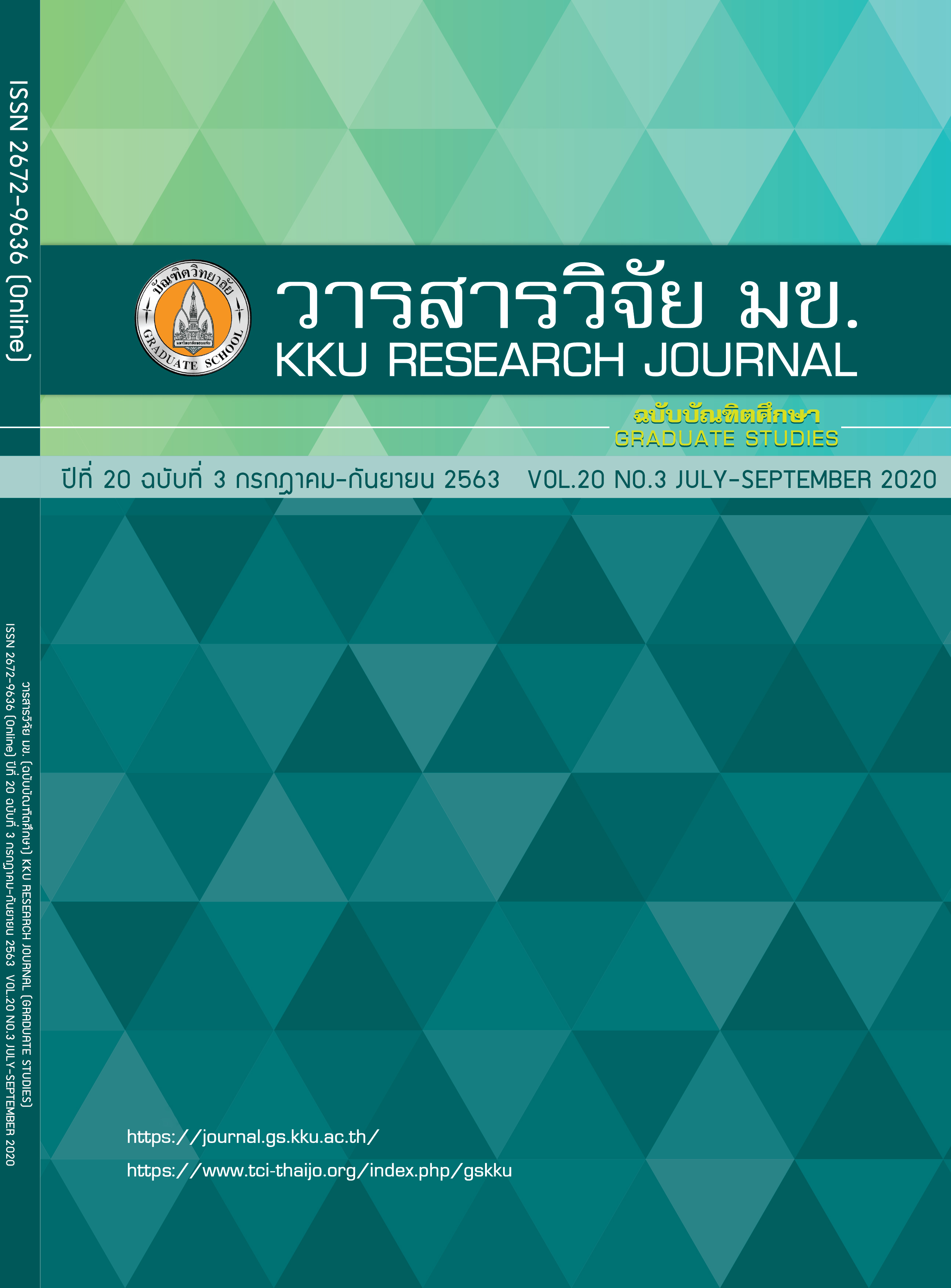Water Hyacinth Fiber Filter Sheet with Natural Rubber Latex as Binder for Treatment of Reactive Dyes in Aqueous Solution
Keywords:
Water hyacinth fiber, Reactive dyes, Natural rubber latexAbstract
This research was to investigate the feasibility of using water hyacinth fiber filter sheet with natural rubber latex (NRL) as binder to treat 3 reactive dyes (2% Red, SBN, 2% Blue G and 2% Yellow RN). The water hyacinth fiber (WHF) was obtained by sodium hydroxide solution modification. To determine the contact time of WHF, the optimal contact time at 3 days was achieved. In addition, the adsorption capacity of 3 reactive dyes were 1.14, 1.20 and 1.51 mg/g respectively. At the concentration of 3 reactive dyes solution 20, 10 and 10 mg/L respectively and the 1 g of WHF, the color value of the treated solution were not over 300 ADMI (standard value of wastewater industry). The optimal ratio by weight of WHF to NRL was 1: 2. Furthermore, the dyes removal efficiency of WHF filter sheet was determined in the 3 mixed dyes solution. The experimental results revealed that the WHF filter sheet size 5x16 cm could remove 3 reactive dyes until 640 mL of the mixed dyes solution 10 mg/L was thoroughly passed. Therefore, this WHF filter sheet has enough potential to remove these 3 reactive dyes.
References
Thiravetyan P, Towprayoon S, Inthorn D, Chawakitchareon P, Turakji P. Decolorisation of reactive dyes from textile dyeing wastewater by agricultural and industrial wastes [Internet]. 2006 [update 2014 May 23; cited 2019 Jan 23]. Available from: https://www.kmutt.ac.th/rippc/pmt43.htm
Ministry of industry. Guidelines for the management of waste water from textile dyeing factories. Bangkok: Chula Unisearch Chulalongkorn University; 2013. Thai.
Sarakarnkosol W. Pollution and danger of waste water from dyeing. Environmental Journal. 2017; 21(1): 7-14. Thai
Jiangbin Z, Zhengdong Z, Ru R, Xiaofeng S, Zhiping M, Hong X, et al. Chitosan adsorbent reinforced with citric acid modified β-cyclodextrin for highly efficient removal of dyes from reactive dyeing effluents. Eur Polym J. 2018; 108: 212-218.
Junlaoun J. Preparation of water hyacinth adsorbent for removal of direct dyes from textile wastewater [MSc thesis]. Bangkok: Kasetsart University; 2007. Thai.
Narawong W, Panya P, editors. Preparation of cellulose from water hyacinth leave to adsorb Cr (VI) ion. Proceedings of the 4th National Conference KPRU; 2017 Dec 22; Kamphaengphet, Thailand. Bangkok: Office of Academic Resources and Information Technology KPRU; 2018. Thai.
Ruparseart P. The utilization of water hyacinth stem bioadsorbent as growing material in constructed
wetland systems for dyestuff removal [MSc thesis]. Bangkok: Kasetsart University; 2015. Thai.
Jankat A, Auhachuk T, Songtumlee P, Aujitchai V, editors. Study of wood polymer composites from water hyacinth fibers and low density polyethylene (LDPE) using PE-g-MA as a compatibilizer. Proceedings of Forcons; 2015 Sep 18-20; Bangkok, Thailand. Bangkok: Ministry of Natural Resources and Environment; 2016. Thai.
Piriyayon S, Surin P, Buasri K, editors. The study of compressed fibers plates from a mixture of pennisetum pedicellatum with natural rubber latex. Proceedings of the 1st National Conference RUSCON; 2016 Jun 22; Ayutthaya, Thailand. Bangkok: Rajamangala University of Technology Suvarnabhumi; 2017. Thai.



